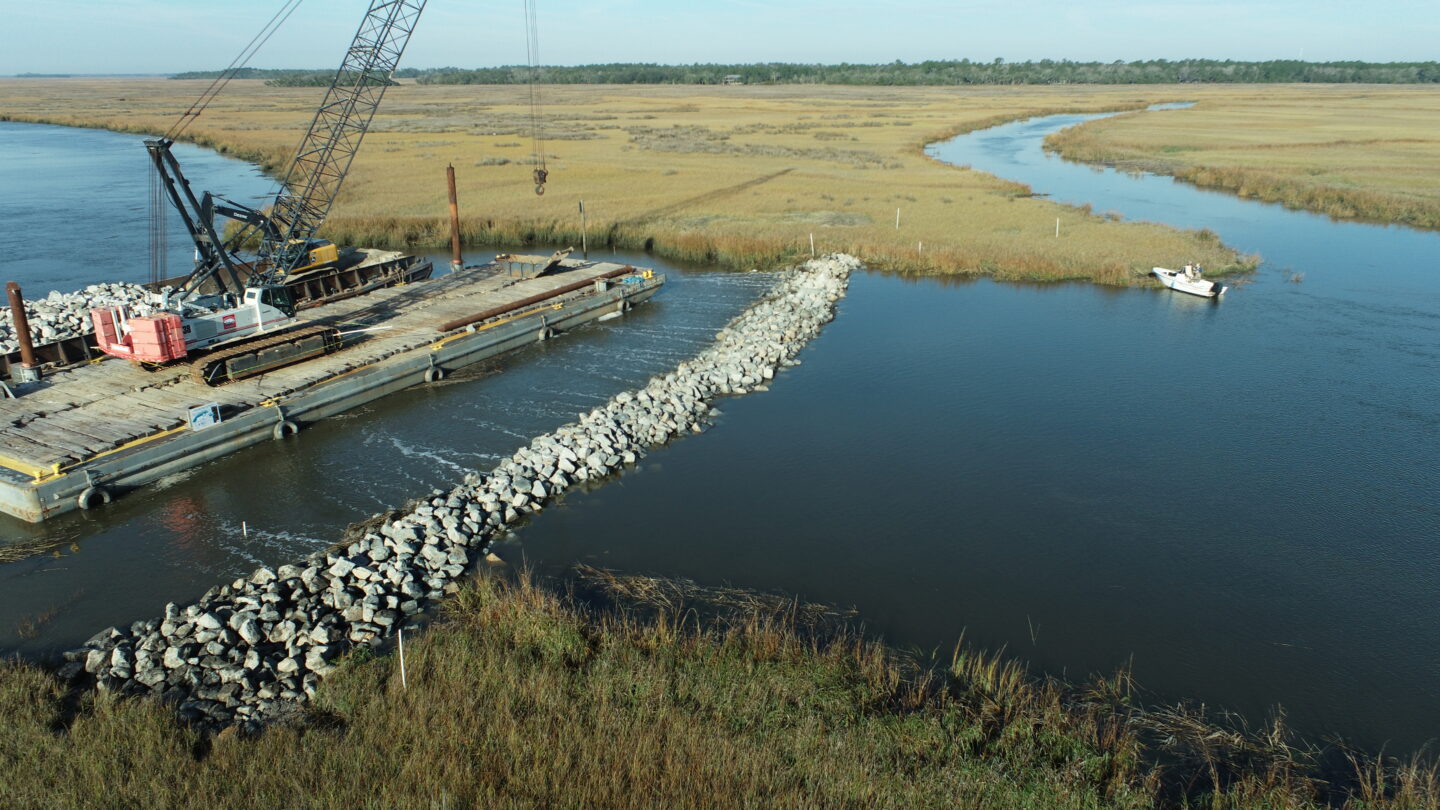Reviving Georgia’s Coastal Salt Marshes
The Takeaway: With the alignment of local and federal funding, the healing of Georgia’s salt marshes is underway as the Army Corps of Engineers corrects decades of environmental damage caused by the logging industry, with initial restoration efforts showing improvements to water flow and natural features.

Decades of environmental damage caused by the logging industry in Georgia’s salt marshes is being addressed with promising results. The project involved closing two logging cuts originally made to transport Georgia’s timber, an alteration that has disrupted tidal flow since the 1930s. The project was one of the first to be completed in the country that was partially funded by the Bipartisan Infrastructure Law, with the remainder funded by the Georgia Outdoor Stewardship Program and the Dover Bluff Club. Pre-construction data collection was funded by the Georgia Coastal Management Program. Phase one has already improved water flow, and locals have seen the return of natural features like banks and sandbars. This restoration effort emphasizes the vital role marshes play as crucial ecological buffers against rising sea levels and essential habitats for coastal wildlife.
Man-made cuts in estuarine landscapes often become obsolete and neglected over time. These cuts, including navigation channels, are initially created to boost economic gains in coastal regions—but the consequences for ecosystem health cannot be ignored. Common issues include inconsistent water flow, sediment buildup, and salt- and freshwater imbalance, all of which harm wildlife and habitat.
The Army Corps of Engineers completed the initial phase of this restoration project and is closely monitoring the outcomes. If the restoration proves successful and funding is available, a second phase will be initiated to close another significant cut in the marsh. (2023)
Partners: NOAA, the Georgia Coastal Management Program, Army Corps of Engineers, Augusta University Research Institute, Inc., Georgia Outdoor Stewardship Program, Dover Bluff Club
PRINT